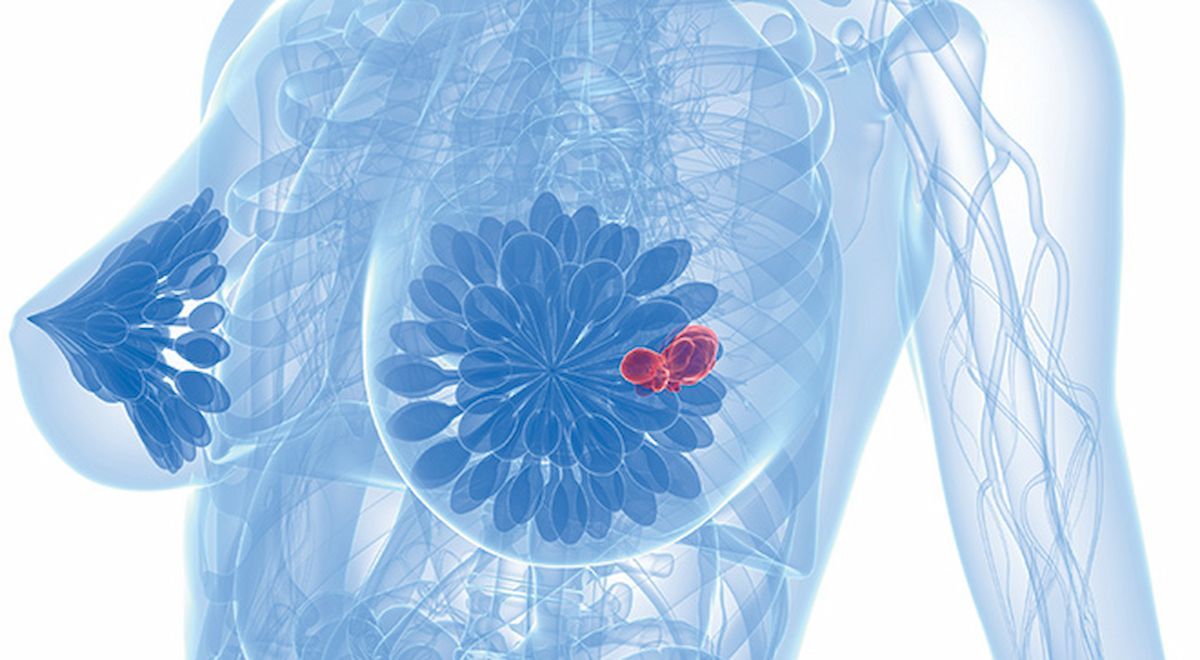DCISionRT Shows Superiority vs Clinicopathology in Predicting DCIS Risk
Patients reclassified to high-risk clinicopathology with DCISionRT saw an absolute reduction in IBR rates of 11.6%; from 17.7% to 6.1%.
Findings from the study revealed that a mean of 57% of patients who were initially classified as DS low risk were reclassified as DS high risk.

Treatment decisions based on a 7-gene molecular-based test, DCISionRT®, may more accurately risk stratify ipsilateral breast recurrence (IBR) in patients with ductal carcinoma in situ (DCIS) compared with clinicopathology alone, according to results from a multinational study published in the International Journal of Radiation Oncology, Biology, and Physics.1
Findings from the study revealed that a mean of 57% (range, 51%-63%) of patients who were initially classified as decision score (DS) low risk were reclassified as DS high risk. The reclassified group experienced reduced IBR rates with radiation therapy vs without, with a mean HR of 0.30 (P <.001). Furthermore, among patients who met any low-risk clinicopathology criteria and were reclassified to high risk, the mean 10-year IBR rate was 21.4% without radiation and 6.4% with radiation. An independent external validation cohort showed that among patients reclassified as DS high risk from low-risk clinicopathology (mean, 54%), the IBR rate was significantly reduced with radiotherapy at a mean HR of 0.32 (P < .001).
Among patients initially classified as high risk by clinicopathology, a mean of 28% (range, 22%-33%) were reclassified as DS low risk; however, IBR rates did not significantly differ with or without radiation, and p-values across clinicopathology criteria ranged from 0.26 to 0.70. Furthermore, patients who were reclassified to low risk after a high-risk clinicopathology classification experienced a mean 10-year IBR rate of 5.0% without radiation and 5.2% with radiation. In an independent external validation cohort, a mean of 33% of patients were reclassified from high-risk CP to DS low risk, with an IBR rate that was not significantly reduced by radiotherapy (P = .33).
"This observational study further supports optimizing de-escalation and escalation treatment strategies using DCISionRT,” study author Patrick Borgen, MD, chair of the Department of Surgery at Maimonides Medical Center, said in a news release on the study findings.2 "The national randomized clinical trial (NRG CC-016) will soon be underway to further define the utility of DCISionRT to identify important subsets of patients with low recurrence risk and minimal to no benefit from radiation therapy."
A total of 926 patients with low-risk DCIS after breast conserving surgery were included in the study. Women were classified as DS low risk, with a DS of no more than 2.8 and no residual risk subtype (RRt), or DS high risk, with a DS of more than 2.8 with or without RRt. The RRt does not include CP factors but combines a subset of similar molecular biomarkers.
Biosignature testing was conducted on archived tissue samples. Validation of the 7-gene biosignature defined the optimal threshold of a DS of 2.8 to stratify DS low-risk patients who had minimal radiotherapy benefit from those who had a significant reduction from radiation, defined as a DS greater than 2.8. Clinicopathology factors included age, grade, size of tumor, and margin status as well as VNPI-, MSKCC-, DCIS nomogram-, ECOG 5194-, and RTOG 9804-based criteria.
Clinicopathology low- and high-risk groups were further stratified into dichotomous DS low- and high-risk groups, with risk group distributions determined based on patients meeting various clinicopathology criteria. Kaplan Meier survival analyses were used to calculate IBR rates for patients treated with or without postoperative radiotherapy.
A total of 69% of evaluable patients received postoperative radiotherapy, and 34% received postoperative endocrine therapy; 73% of those prescribed endocrine therapy received radiation. The median follow-up for the study population was 8.5 years (IQR, 5.8-10.2), and a total of 92 ipsilateral breast events were recorded.
“The study underscores the utility of DCISionRT to enhance shared decision-making and deliver more personalized [radiotherapy] guidance in the management of DCIS," first study author Frank Vicini, MD, radiation oncologist at Michigan Healthcare Professionals, said in the news release.2
References
- Vicini F, Shah C, Mittal K, et al. Limitations in the application of clinicopathologic factors alone in predicting radiation benefit for women with low-risk ductal carcinoma in situ after breast conserving surgery: the impact of a 7-gene biosignature based on 10-year ipsilateral breast recurrence (IBR) rates. Int J Radiat Oncol Biol Phys. 2025;18:S0360-3016(25)06007-9. doi:10.1016/j.ijrobp.2025.07.1411
- PreludeDx study demonstrates superiority of DCISionRT® over clinicopathology factors and criteria for DCIS treatment management. News release. PreludeDx. July 31, 2025. Accessed August 5, 2025. https://tinyurl.com/unwea7up